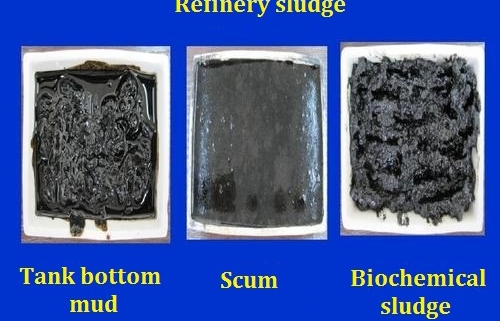In the petrochemical wastewater treatment technology, oil sludge, scum and tank bottom oil sludge are referred to as “Refinery sludge”. The “Refinery sludge” treatment is a major problem in the process of oil sludge treatment in refineries. If the “Refinery sludge” is improperly handled, it will cause a vicious cycle in the sewage treatment device, affect the sewage discharge qualification rate, or cause secondary pollution . The sources of “Refinery sludge” are: the sludge mixture carried in the process of sewage inflow, the sludge formed on the bottom of the sewage treatment device or the sludge, scum, and residual activated sludge formed on the oil trap.
The harm of “Refinery sludge”
In the sewage treatment process of oil refineries, generally, after the “Refinery sludge” are stored in the pond for a certain period of time, the muddy water is initially separated, the surface sewage is returned to the sewage treatment device, and the mud with a lower water content in the bottom of the pond is processed. However, due to the limited capacity of the “Refinery sludge” pond, if the “Refinery sludge” cannot be processed in time, the mud water cannot be separated in time, and the discharged sewage contains a large amount of mud. After entering the sewage treatment system, it is mixed with the new “Refinery sludge”. Vicious cycles can occur in sewage treatment plants.
The “Refinery sludge” of the vicious cycle after the oil sludge is formed in the oil trap to the flotation treatment system, the slag volume of the flotation is increased, the number of slag collections of the flotation is increased, and the weight of oil, suspended solids in the flotation is increased. And other indicators have increased significantly.
Not only that, the “Refinery sludge” contain high-molecular organic compounds such as oil, sulfur, and phenol, which can easily cause the petroleum in the soil to exceed the standard, and the soil can compact. The “Refinery sludge” scattered and stacked pose a major threat to the soil, surface water, and groundwater. COD, BOD, and petroleum exceeded the standard; the oil and gas in the “three muds” volatilized, causing the air quality in the production area to exceed the total hydrocarbon concentration risk.
Recycling of “three mud”
1. “Refinery sludge” sent to coking plant to prepare petroleum products
“Refinery sludge” contains a certain amount of alkanes, naphthenes, aromatics, olefins, gums and asphaltenes, etc. The coking process is essentially the thermal conversion process of hydrocarbons, that is, the high temperature thermal cracking and thermal condensation of heavy oils. ; The “Refinery sludge” coking process generally uses the dehydrated “Refinery sludge” as coking raw material or quench oil.
2. “Refinery sludge” used as auxiliary fuel for brick burning in brick and tile factory
The “Refinery sludge” raw liquid has a high water content, a large volume and a large number, and must be mechanically dehydrated before it can be used. After mechanical dehydration, the “three mud” has a water content of 80% -85%, an oil content of 7% -10%, and a heating value of 9-14KJ / kg. It can be used as an auxiliary fuel for bricks and bricks factories. In order to achieve the purpose of comprehensive utilization and harm reduction, the solid waste is recyclable and harmless.
3. Recovery of fuel oil from oily sludge
Luoyang Building Material Institute has been focusing on the research and development of the “Refinery sludge” treatment system. In 2014, skid-mounted sludge pyrolysis retorting treatment technology was developed and put into production at home and abroad, which has been well received by users.
4. Residual activated sludge made fertilizer
The remaining activated sludge produced by the sewage plant is rich in protein and nitrogen and phosphorus nutrients, which can be turned into fertilizers through quenching and tempering, and used as nutritional fertilizer for non-edible plants.



